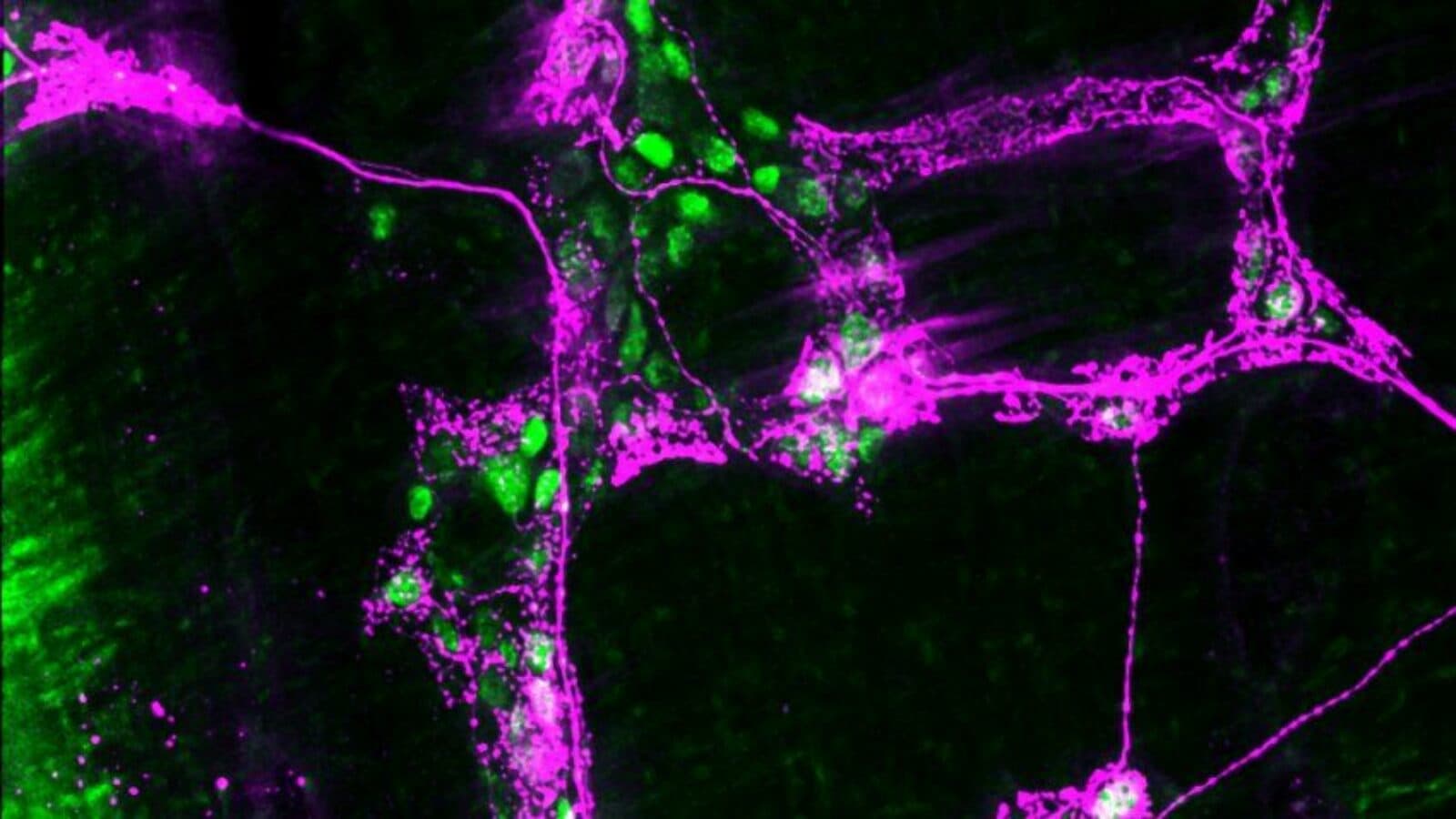High-Tech and Hungry
by Lindsay Borthwick
Researchers continue to expand our knowledge of the brain using revolutionary new tools

The Author

Kavli Neuroscience Institutes have been very busy, from New York to Trondheim. In this roundup of research highlights, researchers continue to expand our knowledge of the brain using revolutionary new tools, from a highly immersive virtual-reality setup that puts humans at the center of the experiment, to a new imaging technique that reveals the brain’s inner working at multiple scales.
- Be a lab rat, in virtual reality
At the Kavli Institute for Systems Neuroscience (KISN) in Norway, you can put on virtual reality goggles and wander a maze, just as lab rat would, all in the name of science. KISN is also where researchers have been working for decades to understand how we move around in the world and where the Nobel Prize-winning discovery of grid cells—a key component of the brain’s GPS were identified. Now, a new study has shown that when our environment is distorted, our ability to remember where something is located also takes a hit. Volunteers were asked to navigate a square or trapezoidal environment and find a set of objects. It was much easier for them to remember where something was located in the square environment compared with the trapezoidal one. The results corroborate previous studies in mice. The research was led by Christian Doeller.
Watch a recent visit to the lab in which a Nature reporter tested her navigation skills:
- Not a gut feeling
In a study focused on understanding the biology of hunger, researchers mapped the sensory neurons innervating the stomach and intestine that relay messages to the brain via the vagus nerve. Then, the research team, led by Zachary Knight at the University of California, San Francisco (see our recent profile of Knight), was able to selectively stimulate different neurons in search of the ones that tell an animal to stop eating. They found that stretch neurons in the intestine rather than in the stomach could eliminate the appetite of hungry mice. In addition to helping us understand how eating is regulated, the results may explain why bariatric surgery is so effective at promoting weight loss in people with obesity. Knight is a member of the Kavli Institute for Fundamental Neuroscience.

- “New studies from the past decade tell us that amyloid is part of the story of Alzheimer’s disease, but it’s the smoke, not the fire.”
—Scott Small, director of Columbia University’s Alzheimer’s Disease Research Center and a member of the Kavli Institute for Brain Science. In a recent Q&A, Small discusses why the research community is cautiously optimistic about finding a treatment for Alzheimer’s disease. He explains how the field has shifted away from a focus on the amyloid protein as the central culprit in Alzheimer’s, toward endosomes, which control the movement of proteins around a cell, and microglia, a type of immune cell involved in clearing proteins and other cellular debris.
- A new view of the brain
A major goal of the U.S. BRAIN Initiative, launched by former president Barack Obama in 2013, is to develop new technologies to explore how the brain’s cells and circuits interact at the speed of light. Now, a research team based at Yale University and funded by the BRAIN Initiative, has developed a way to monitor the brain in action in real time—at the level of both cells and circuits. Led by neuroscientists Michael Higley and Michael Crair, both members of the Kavli Institute for Neuroscience, the team combined two imaging techniques (two-photon microscopy and mesoscopic imaging) to capture brain activity in mice. “Merging widely different scales of understanding is a fundamental challenge in neuroscience,” Higley told Yale News. “With this novel approach, we are bridging the gaps between molecular, cellular, and systems biology.”
- In mice, a new clue to Down Syndrome
An experimental drug reversed the learning and memory problems associated with Down Syndrome (DS) in a mouse model that emulates many of the cognitive changes associated with the disorder. The researchers, led by Peter Walter at the University of California, San Francisco, were examining the role of the body’s protein factories in the developmental disorder, which is caused by having an additional copy of chromosome 21. In a surprising discovery, they were able to improve cognition in the animals with an experimental drug that targets the integrated stress response, a biological pathway that shuts down protein production in cells under stress. The results raise the possibility that humans may benefit from treatments targeting the same pathway. Walter is a member of the Kavli Institute for Fundamental Neuroscience at UCSF.